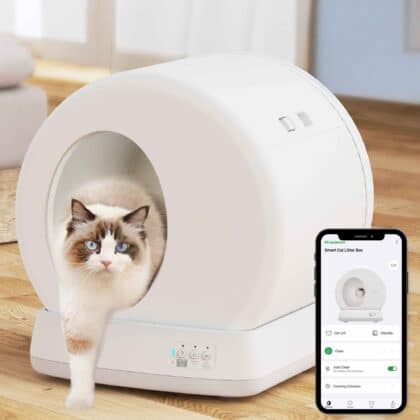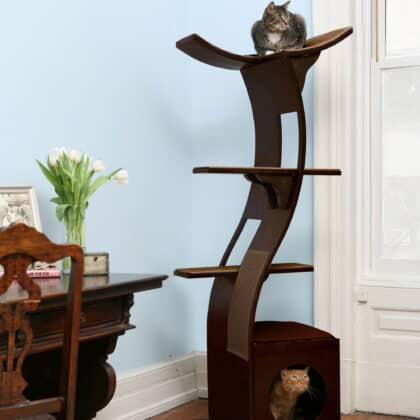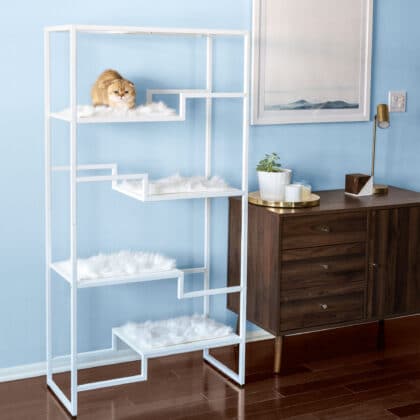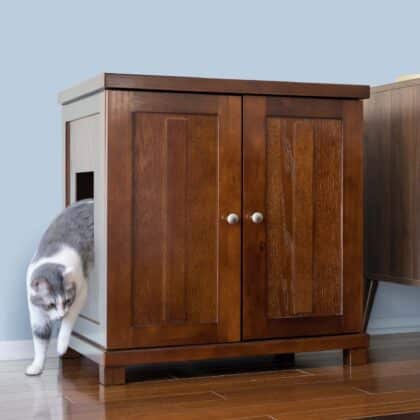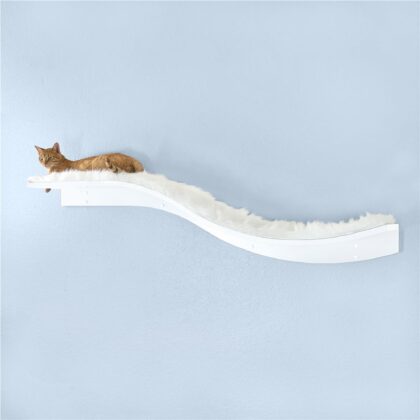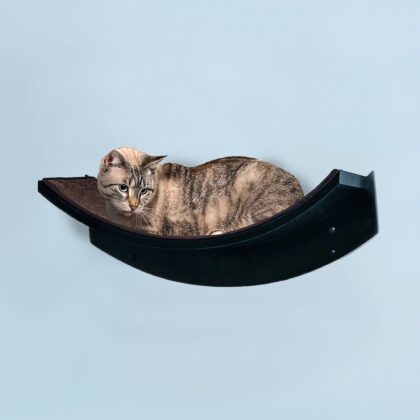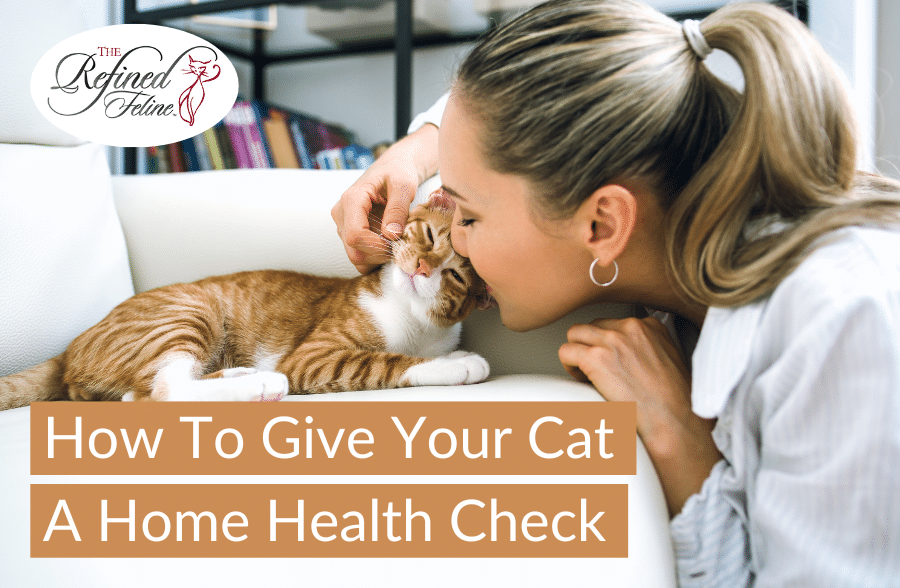
How To Give Your Cat A Home Health Check
It’s generally recommended for healthy cats to visit the vet once a year for a basic wellness check and to make sure they are up to date on vaccines. However, in-between visits, you can also keep an eye on your cat by doing a simple home health check. Here are some things you can do to check on your cat and ensure that they’re feeling their best!
First, Know Your Cat’s Normal Behaviors
Knowing your cat and what is “normal” for them can help you realize when something is amiss. Your cat will undoubtedly have a routine they stick to, and have certain personality traits. Your cat may do certain things at various times during the day or respond to things a certain way. You know your cat the best so you’ll be the first to notice if something seems off. You’ll be used to their meows, chirps, and purr. Also, that cute thing they do when they want to play or want treats. It’s also good to pay attention to your cat’s bathroom habits, and how much they normally eat and drink. This can give you a baseline for when they seem “off” and may have a decreased appetite.
Cats are notorious for hiding their sicknesses. They are ultimately trying to protect themselves as they would in the wild. Cats can be the prey and don’t want to show weakness to any potential predators, and this behavior carries on with indoor cats. It’s important to note any changes you see, whether it’s something they do every day or even if it happened just once. Even the tiny changes can be signs that something may be off. Knowing your cat and how they act when feeling “normal” will make it easier to spot these behavior changes.
Next, Learn How To Give Your Cat A Home Health Check
Step 1: Give Your Cat A Thorough Pat Down
Check your cat’s overall body condition whenever you pet them. Being covered in fur, it can be easy to miss something hiding under all the fluff like a scratch, bite, or something stuck. You’ll want to ensure you’re checking them all over and thoroughly. Feel your cat’s head, body, and tail for any bumps, lumps, or even hair loss. Check for fleas by moving a small patch of their fur aside and see if you notice any small black dots, you can also use a flea brush.
To check for any stiffness or pain, move their limbs in an ambulatory fashion. Your cat may not allow this, so you can also just feel their arms and legs to detect any other concerns. Be sure to also check over your cat’s paws by pressing down to expose their nails. Check for any wounds or broken nails, and give them a good trim to maintain proper nail health.
On average, healthy cats will have bright, round, open eyes with just a corner of their extra eyelid showing. They will make frequent trips to the food and water bowl, as well as the litter box. Most cats will urinate multiple times a day and defecate at least once, producing slightly soft feces that hold a shape. Their coat will be sleek, clean, non-greasy, and free of mats. They will also move about freely and jump without any issues. If you notice any changes to their usual behavior, that’s an indication that you should take them to the vet.
Step 2: Check To See If Your Cat Is Hydrated Enough
Many cats do not drink enough water and dehydration can be dangerous. To check for dehydration, you can gently grab the patch of skin in-between their shoulder blades to check their skin’s elasticity and hydration. If the skin snaps back down quickly, they are hydrated. If the skin is very slow to return, your kitty may be dehydrated. If you have an older cat though, their skin may just be loose skin from losing a few pounds over the years. If you suspect that your cat is not getting enough water, you may want to invest in a cat water fountain. You can also add more wet food to their feeding routine and even water down their wet food.
Step 3: Look In Your Cat’s Ears When You Give Your Cat A Home Health Check
Check your cat’s eyes to ensure they are bright and clear. They shouldn’t be weeping, have any colored discharge, or be squinting their eyes. The third eyelid should be visible, but if it’s covering more of their eye, they may be feeling under the weather. Your cat’s ears should be pink and free of any discharge, wounds, parasites, or odor. You can use a cotton ball or a makeup round with a little water to check their cleanliness. If you wipe out anything brown-colored, it’s most likely wax. If it’s darker or has an odor to it, there may be an infection on your kitty’s ears. It’s best to leave the ears alone at that point so the vet can get a sample and get it treated.
Your cat shouldn’t be holding their ears at differing angles, either, which may be an indication that something is going on. They may also excessively scratch their ears if there’s an infection so be sure to check them out frequently.
Step 4: Check Your Cat’s Mouth, If They’ll Let You
When you give your cat a home health check, don’t forget to check their mouth (if they’ll let you). Try lifting their lip to check their gums, which should be pink and free of inflammation or bleeding. Try pressing the tip of your finger to their gums, which should pale slightly but then return to a normal color. If it’s slow to return to pink or looks red or pale, it may be time to visit your vet. Make sure you don’t see any teeth jutting out at weird angles or severe inflammation around the tooth line. If there is any bad odor or really bad breath, this can also mean their teeth need cleaning. Your cat may require dental treatment if things look a little painful or you notice any changes in their eating habits.
Related: Ways To Keep Your Cat Safe And Healthy Indoors
Spotting the Signs
Sometimes a cat can feel great one day, and not so great the next. Other times it can be more gradual, such as when they age, and you notice them getting a little thinner. So, a great way to know if something is amiss is when their normal behaviors suddenly change. Some examples can include:
- A cat that is usually pretty quiet and is suddenly meowing a lot
- A playful cat that is no longer playing on their cat tower and is lethargic
- An attention-seeking cat that is suddenly hiding
- Drinking a lot more water than usual
- Going outside of the litter box
- Scooping a lot more or a lot less from the litter box
- Sudden cranky or agitated behavior
Give Your Cat A Home Health Check With These Tips
Becoming more aware of what’s normal for your cat can help you detect when something is off. Being in tune with your cat’s routines can help you notice those tiny changes which can mean big changes medically. The faster you notice something is wrong with your cat, the quicker you can get them the medical attention they need. They’ll be feeling better in no time, and you’ll have peace of mind that your kitty is healthy and happy!


